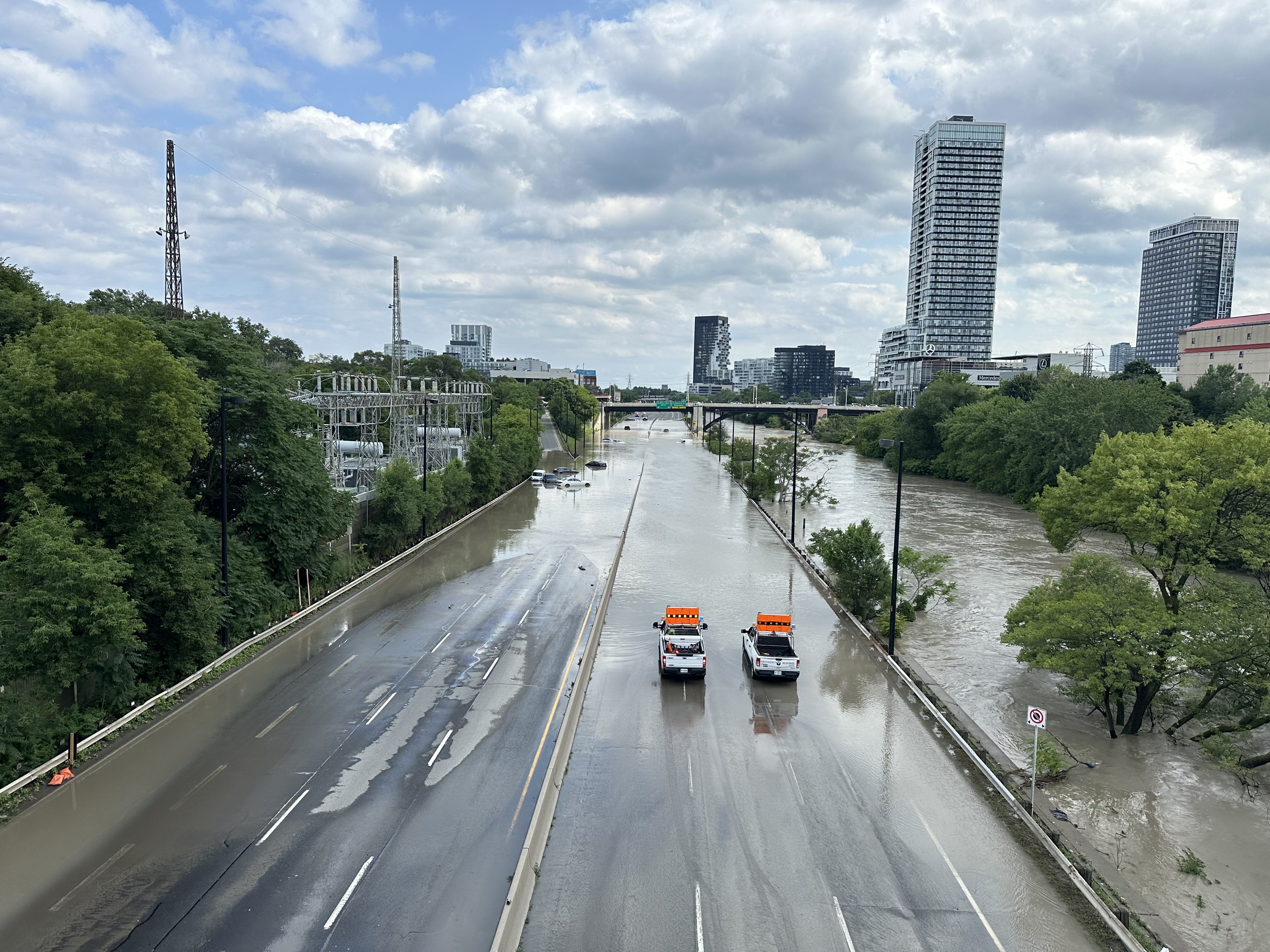
30.07.24 - Recent flooding in Toronto highlights value of ongoing research into Great Lakes Basin resilience
Over three days in late 2022, the Daniels Faculty’s Centre for Landscape Research, led by Associate Professor Fadi Masoud, hosted the first post-pandemic gathering of the Great Lakes Higher Education Consortium, an academic action group dedicated to fostering a more resilient, climate-ready Great Lakes Basin through the study and promotion of “integrative blue-green infrastructure.”
The Consortium had been co-founded in 2020 by the Council of the Great Lakes Region (CGLR), the University of Toronto and the University of Illinois System. A year later, four other major universities joined the group, which aims to address the region’s most pressing environmental challenges by encouraging regular and impactful collaborations among academics, industry and governments.
On the heels of the 2022 conference, the Consortium released a summary report entitled REIMAGINING WATER II: The Future of Blue-Green Infrastructure in the Great Lakes Basin. The group has also launched a website featuring an interactive map of Great Lakes cities and case studies associated with them.
Together the two resources offer practitioners and policy makers “a clear path” toward developing the kind of region-specific planning and design initiatives that will become increasingly essential as jurisdictions across the Great Lakes grapple with climate-related issues such as the flooding (pictured above and below) that caused an estimated $1 billion in damage this month in Toronto.

“Landscape architects have been at the forefront of designing integrated blue-green systems,” says Masoud. “We work with terrain, water (blue) and vegetation (green) to shape the public realm and urban infrastructure as a foundational disciplinary premise.
“Climate shocks and stresses, such as urban flooding and extreme heat, remind cities worldwide of the need to integrate dynamic blue-green systems as critical landscape infrastructures. These infrastructures will increase cities' capacity to adapt to climate change. The Great Lakes warrant their unique set of landscape-based urban design standards, as each region’s physiographical conditions and pressures vary.”
The question of the Great Lakes Basin as a unique environment is at the core of the Reimagining Water project and of the RWII report, which cites “the mismatch between policy and technical guidelines for green/blue infrastructure developed on the East and West Coast [of North America] and the specific conditions of the Great Lakes.”
“This disconnect in technical terms,” it continues, “is complemented by a cultural disconnection. Progressive practices in green/blue infrastructure design are suspect here if they haven’t been developed or proven here.”
The 2022 conference, which Masoud co-organized with James Wasley of the University of Wisconsin-Milwaukee, brought 45 participants from academia, professional disciplines, NGOs and government to the Daniels Faculty.
Among the topics they discussed were a vision for the Great Lakes Basin as an ecological unit, the promise of common project types in terms of fostering resilience and the connection between social and climate justice.
All of its findings and more are presented in the report. The work of the Consortium is ongoing and further conferences are planned.
Images of Don River flooding in Toronto by Paul Faggion

